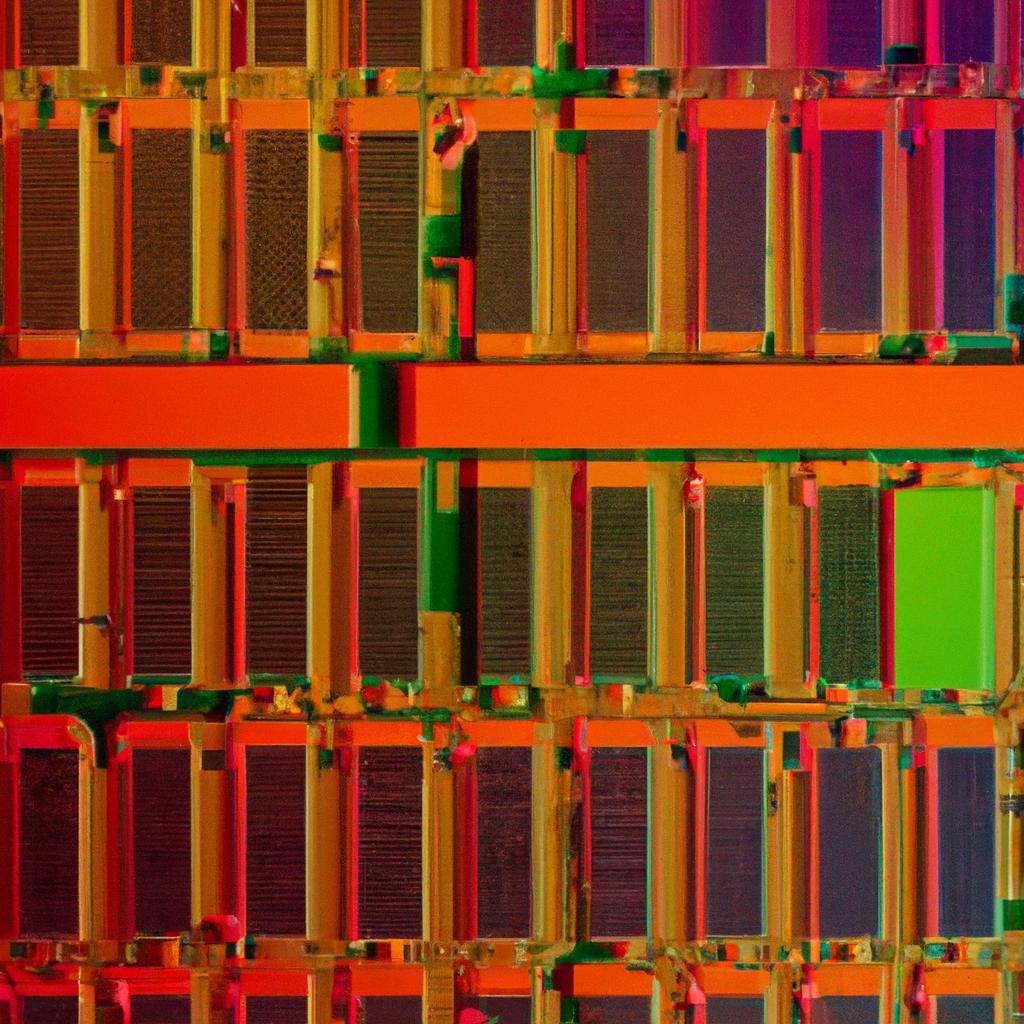
Understanding Different Types of Memory: DDR4 vs DDR5
In the ever-evolving world of technology, the battle between DDR4 and DDR5 memory types rages on. As the heart and soul of our devices, understanding the differences between these two memory technologies is essential for maximizing performance. Let’s dive into the intricacies of DDR4 and DDR5 to unravel their unique capabilities and determine which one reigns supreme in the realm of memory storage.
Table of Contents
- Understanding the Evolution of Memory Technology
- Key Differences Between DDR4 and DDR5 Memory
- Benefits of Upgrading to DDR5 Memory Modules
- Recommendations for Choosing the Right Memory Type
- Q&A
- Future Outlook
Understanding the Evolution of Memory Technology
In the world of computer technology, memory plays a crucial role in determining the overall performance of a system. Two popular types of memory commonly used in computers are DDR4 and DDR5. While both serve the same purpose of storing and retrieving data, they have distinct differences that set them apart.
DDR4:
- Introduced in 2014, DDR4 is the fourth generation of Double Data Rate Synchronous Dynamic Random Access Memory.
- It offers higher transfer speeds, lower power consumption, and increased density compared to its predecessor, DDR3.
- DDR4 has a higher maximum memory capacity, making it ideal for gaming and high-performance computing tasks.
DDR5:
- Expected to be released in 2021, DDR5 is the fifth generation of DDR memory, promising even faster data transfer rates.
- DDR5 will offer improved power efficiency and better performance compared to DDR4, allowing for more efficient multitasking and smoother operation of applications.
- With advancements in technology, DDR5 is expected to become the new standard for memory in the near future.
Key Differences Between DDR4 and DDR5 Memory
When it comes to computer memory, DDR4 and DDR5 are two common types that users encounter. Understanding the key differences between these two types of memory can help you make informed decisions when upgrading your system.
One major difference between DDR4 and DDR5 memory is their speed. DDR5 memory offers faster speeds compared to DDR4, making it a better choice for high-performance tasks such as gaming or video editing. Additionally, DDR5 memory consumes less power than DDR4, which can lead to improved efficiency and longer battery life in laptops and other devices.
Benefits of Upgrading to DDR5 Memory Modules
DDR5 memory modules offer several benefits compared to DDR4. One key advantage is increased bandwidth, allowing for faster data transfer rates. This means improved performance and responsiveness, especially in tasks that require a lot of memory usage such as gaming or video editing. Additionally, DDR5 modules typically have higher capacities available, allowing users to upgrade to larger amounts of RAM for more demanding applications.
Another benefit of upgrading to DDR5 memory is improved power efficiency. DDR5 modules are designed to operate at lower voltages, leading to reduced power consumption and heat generation. This not only helps to extend the lifespan of the memory modules but also contributes to a more energy-efficient system overall. upgrading to DDR5 memory can offer a significant performance boost and improved efficiency for users looking to enhance their system’s capabilities.
Recommendations for Choosing the Right Memory Type
When it comes to choosing the right memory type for your system, it’s important to understand the differences between DDR4 and DDR5. DDR4 is the current mainstream memory technology, offering good performance and compatibility with most systems. On the other hand, DDR5 is the latest generation of memory, boasting faster speeds and higher bandwidth.
Here are some for your system:
- Consider your system compatibility: Make sure that your motherboard supports the memory type you are considering.
- Think about your performance needs: If you are a heavy user or gamer, DDR5 might be a better option for you due to its faster speeds.
Q&A
Q: What is DDR4 memory?
A: DDR4 memory is the fourth generation of Double Data Rate synchronous dynamic random-access memory (SDRAM) technology.
Q: How does DDR4 differ from DDR5 memory?
A: DDR5 is the fifth generation of DDR memory, offering faster data transfer rates, higher bandwidth, and improved efficiency compared to DDR4.
Q: What benefits does DDR5 memory offer over DDR4?
A: DDR5 memory offers higher data transfer speeds and larger memory capacities, making it ideal for demanding applications such as gaming and content creation.
Q: Can DDR4 and DDR5 memory be used interchangeably?
A: No, DDR4 and DDR5 memory are not compatible with each other due to differences in their architecture and voltage requirements.
Q: Is it worth upgrading from DDR4 to DDR5 memory?
A: If you are a power user or heavy gamer looking for improved performance and future-proofing your system, upgrading to DDR5 may be worth considering. However, for average users, the difference may not be significant enough to justify the cost.
Future Outlook
having a deeper understanding of the differences between DDR4 and DDR5 memory can greatly benefit your future tech endeavors. With DDR5 promising faster speeds, increased bandwidth, and improved energy efficiency, it may be the better choice for those looking to stay ahead of the curve in the ever-evolving world of technology. However, DDR4 still remains a reliable and cost-effective option for those who may not need the latest and greatest features. Ultimately, the decision between DDR4 and DDR5 comes down to your specific needs and budget. Whichever you choose, remember that memory plays a crucial role in the performance of your devices, so choose wisely!

